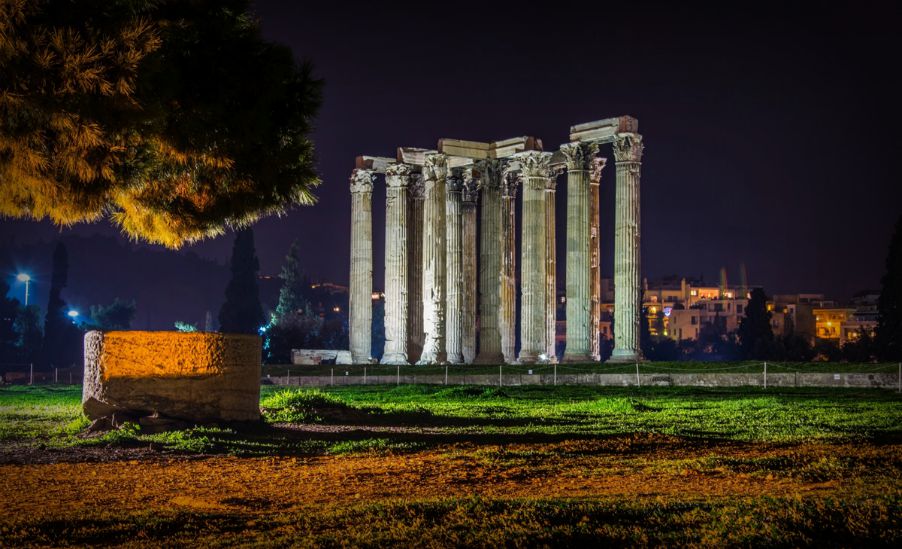The colossal Temple of Olympian Zeus or ‘Olympeion’ in central Athens; one of the signature monuments of the Greek capital, is to undergo complete structural repair and restoration.
The go-ahead for the plans was given by Greece’s Central Archaeological Council, in a recent session.
“The monument has several structural restoration problems,” the head of the Athens Antiquities Ephorate, Eleni Banou, told the Athens-Macedonian News Agency on Tuesday.
The restoration has to be attempted, Banou noted, “because, if we don’t, we will be answerable to history.”
There is currently extensive structural damage to the monument, she pointed out, and especially to the columns.
She said that it is urgent to mount a “rescue operation” to stop the causes for its continued wear and tear, and to reinforce its structural stability.
The last recorded major damage to the monument was in 1944; during the Greek civil war, where marks from bullets were still visible on the columns, Banou said. Prior to that, the bulk of the damage was done in the Byzantine era, when most of its 104 pillars were ground down to make first-class lime, and/or looted, in order to be used for building materials.
Currently, only 16 pillars of the massive temple that have survived, were re-erected in their present form in 1835; while the last work to structurally support the monument was done in the late 1960s.
Construction of the Olympeion began in the 6th century BC, during the rule of the Athenian tyrants; who had envisaged building the greatest temple in the ancient world. However, the temple was not completed until 638 years later by the Roman Emperor Hadrian, in the 2nd century AD. During Roman times the temple was renowned as the largest in Greece.
Source: ANA-MPA
The go-ahead for the plans was given by Greece’s Central Archaeological Council, in a recent session.
“The monument has several structural restoration problems,” the head of the Athens Antiquities Ephorate, Eleni Banou, told the Athens-Macedonian News Agency on Tuesday.
The restoration has to be attempted, Banou noted, “because, if we don’t, we will be answerable to history.”
There is currently extensive structural damage to the monument, she pointed out, and especially to the columns.
She said that it is urgent to mount a “rescue operation” to stop the causes for its continued wear and tear, and to reinforce its structural stability.
The last recorded major damage to the monument was in 1944; during the Greek civil war, where marks from bullets were still visible on the columns, Banou said. Prior to that, the bulk of the damage was done in the Byzantine era, when most of its 104 pillars were ground down to make first-class lime, and/or looted, in order to be used for building materials.
Currently, only 16 pillars of the massive temple that have survived, were re-erected in their present form in 1835; while the last work to structurally support the monument was done in the late 1960s.
Construction of the Olympeion began in the 6th century BC, during the rule of the Athenian tyrants; who had envisaged building the greatest temple in the ancient world. However, the temple was not completed until 638 years later by the Roman Emperor Hadrian, in the 2nd century AD. During Roman times the temple was renowned as the largest in Greece.
Source: ANA-MPA


